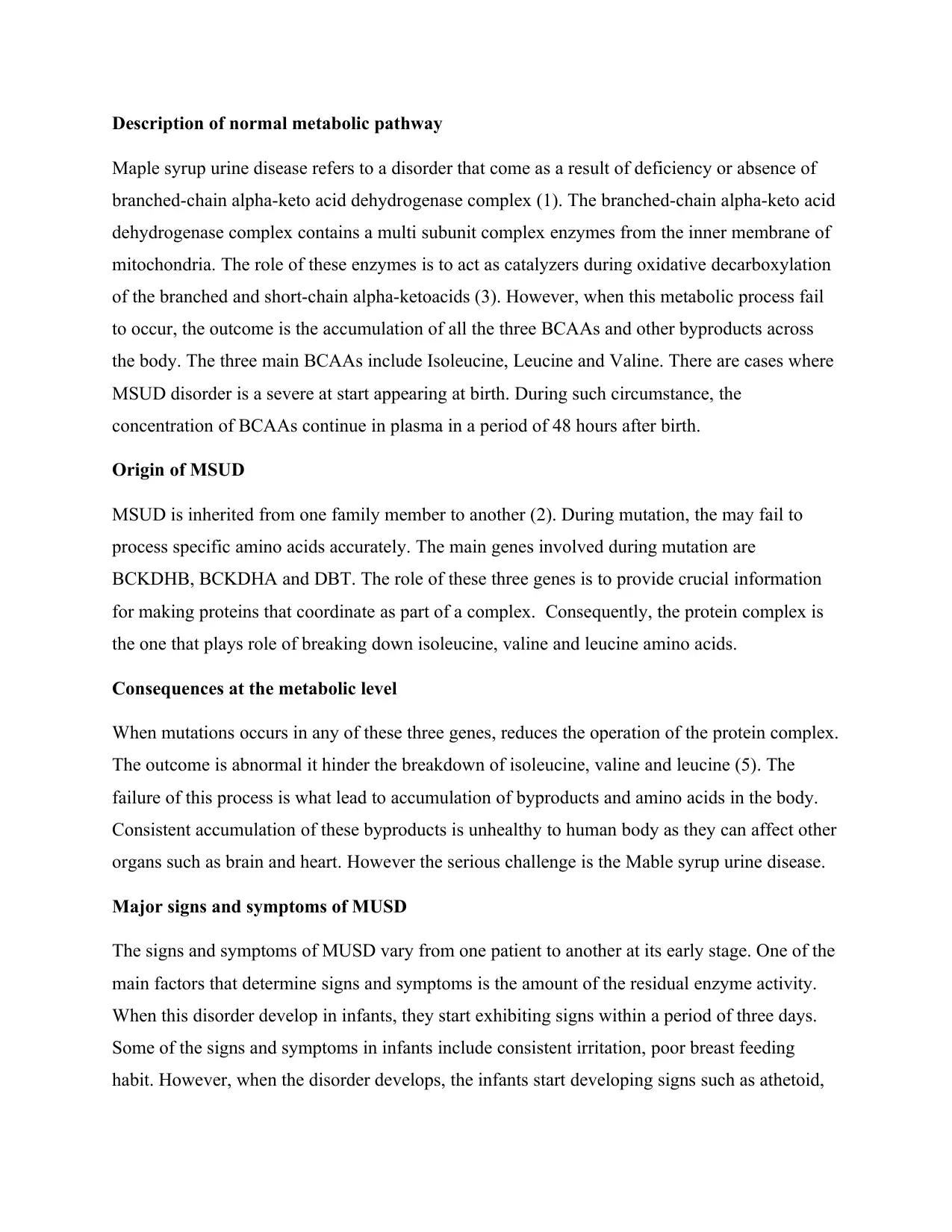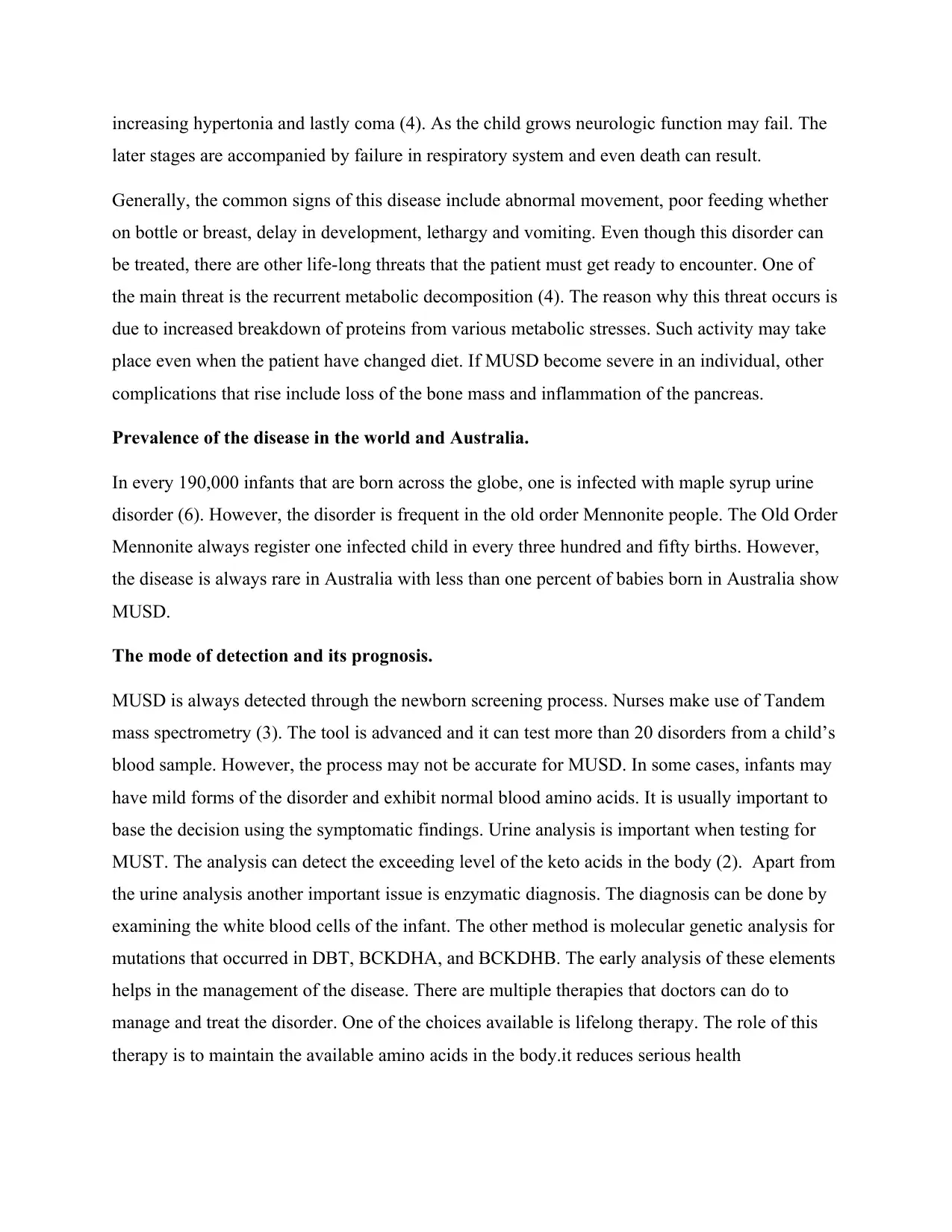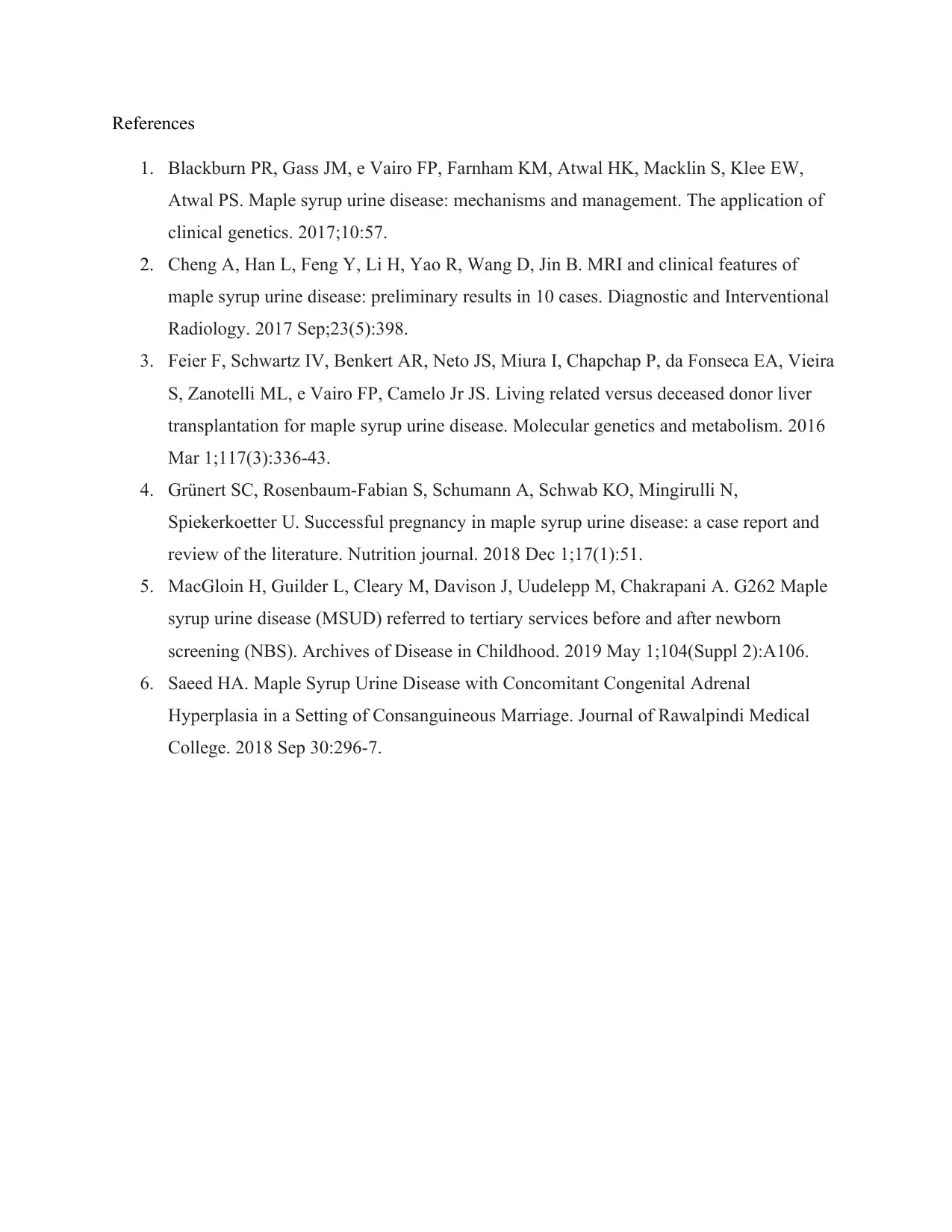Metabolic Disorder Essay: Maple Syrup Urine Disease (MSUD)
VerifiedAdded on 2022/09/18
|5
|1207
|22
Essay
AI Summary
This essay provides a comprehensive overview of Maple Syrup Urine Disease (MSUD), a genetic metabolic disorder characterized by the deficiency or absence of the branched-chain alpha-keto acid dehydrogenase complex. The essay begins with a description of the normal metabolic pathway involving the oxidative decarboxylation of branched-chain amino acids (BCAAs) – isoleucine, leucine, and valine. It then details the origin of MSUD, including the specific genes (BCKDHB, BCKDHA, and DBT) and mutations involved, highlighting the inherited nature of the disease. The consequences of these mutations at the metabolic level are discussed, focusing on the accumulation of BCAAs and their byproducts, which can lead to severe health complications, particularly affecting the brain and other organs. The essay also covers the signs and symptoms of MSUD, which vary depending on the severity and age of onset, the prevalence of the disease globally and in Australia, the methods used for detection, including newborn screening and urine analysis, and the various therapeutic interventions available for managing the disorder, such as lifelong dietary management and immediate medical interventions for metabolic crises. References to relevant scientific literature support the information presented.
1 out of 5







![[object Object]](/_next/static/media/star-bottom.7253800d.svg)